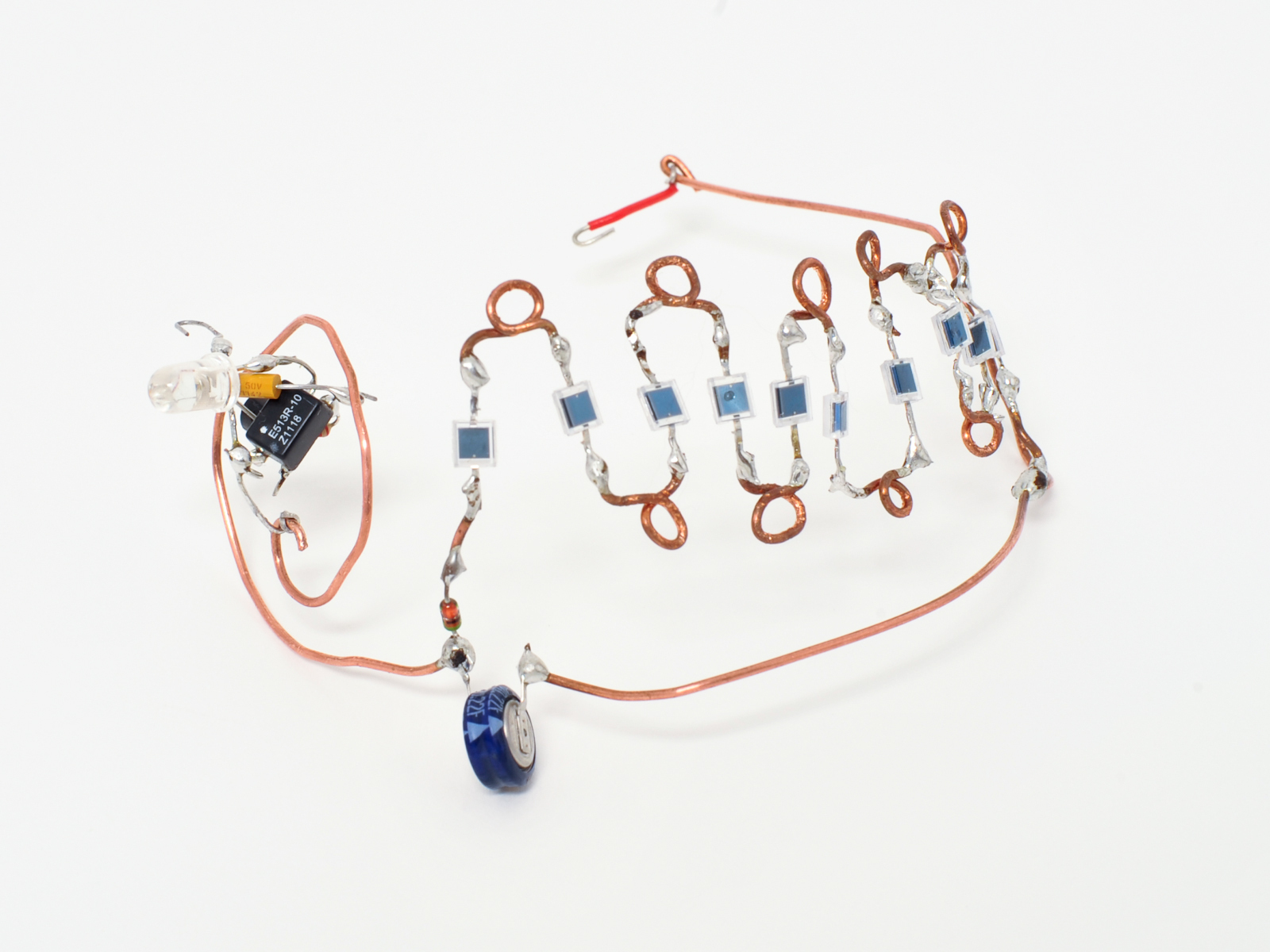My wife fell in love with Alice Planas and Hatti Lim’s glowing bracelet project from CRAFT Volume 06 (“Solar Jewelry,” page 123), so of course we had to make one. I built the circuit and she did the fabric, and it came out nicely, but I felt it could be brighter. So I decided to combine the solar jewelry idea with a Joule Thief circuit, which converts low voltages into short bursts of voltage high enough to light an LED.
This project is the result: the Solar Joule, which combines Solar Jewelry with a Joule Thief. (Note that the joule is a standard measure of energy, and is pronounced like jewel.)
Joule Thief Theory
The Joule Thief circuit is a fairly simple way of converting very low voltages, like from dead batteries, into an oscillating voltage that’s high enough to do something useful. There are many versions online (for example, see bigclive.com/joule.htm). The heart of the circuit is a pair of inductor coils wound together into a transformer or choke. When current runs into one coil of a choke, it’s resisted until it builds up a magnetic field, which then draws current through the other coil, going in the opposite direction. In the Joule Thief, one coil provides the kick of voltage that overcomes the LED’s forward voltage requirement, and the other generates feedback that drives a transistor into oscillations.


